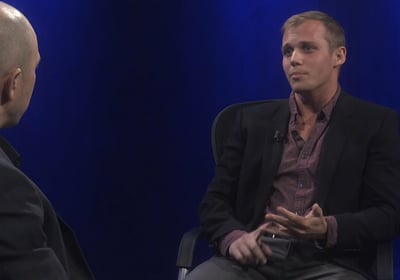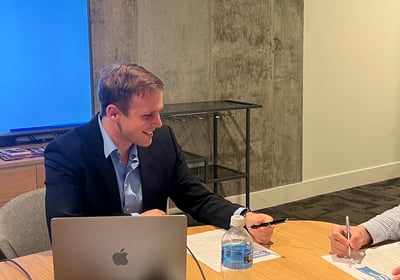
Brander, founder, and...
Visionaries' Go-to Strategist
You have the vision. But if it is unclear, your team and market ignore it. Focus it as a clear brand that they choose to use.
Successful campaigns online...
...in 75+ countries

Rethink your brand's world clearly
Imagine working less confused. Suddenly, you vividly envision what matters, your daily focus accelerates activities, and you gain confidence from reaching results.
While adopting this mindset with your team, work unites to unlock true synergy. Your company becomes a brand that others gravitate towards. As more communities choose it, your team increasingly advances the mission worldwide.
About
My first startup ultimately failed, but it revealed a tough truth: unclear brands are overlooked. After, I learned how to resolve and codify it for teams.
Throughout my life, I have explored and excelled in a range of interests—music, sports, design, and more. Now, I integrate their insights for brands.
2,000
13
Years as a concert bassist
Avg. words edited daily


Clarify your brand at every lifecycle stage
Rethinking your brand’s world starts with clarity. It is your company’s strategic foundation to unite.
Building on it is enabled through a brand-led system that is cohesive and connected.
When an ecosystem has the infrastructure to support the system across your company's lifecycle, its vision becomes its reputation.
There are various ways to reach there—my ecosystem's offerings provide the path at each of your company's lifecycle stages. Explore below.


aCADEMY
The Academy offers coaching and courses to clarify your strategy and decks with confidence.
Coaching: Strategic guidance for growth- to exit-stage companies so they can unite and lead.
Courses: The flagship course gives founders the know-how to pitch like a pro to be clear fast.
20+
100+
founders coached
companies consulted
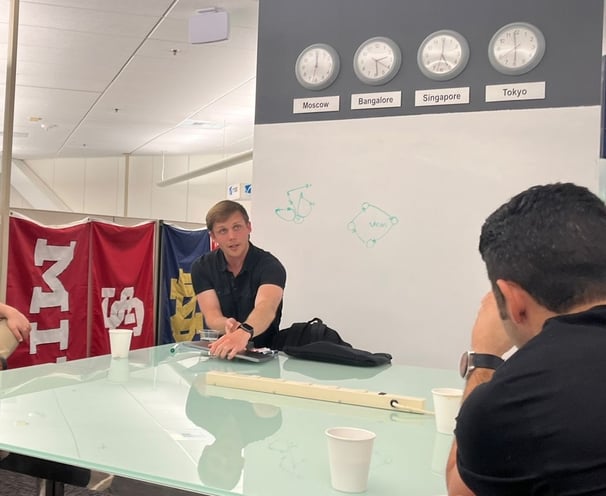

Newsletter: The Brand Brief
Focused on market fit? Subscribe for twice-monthly insights on the mindset, mantras, and methods to find market fit fast with a brand they understand.
eVENTS
With the rapid rise of tools and channels that silo teams, this increases the need to spark synergy.
Speaking: Unite your team—in-office or remote—on a clear mission and story they can use daily.
160+
5,000+
people I presented to
events I co-led over 6 yr
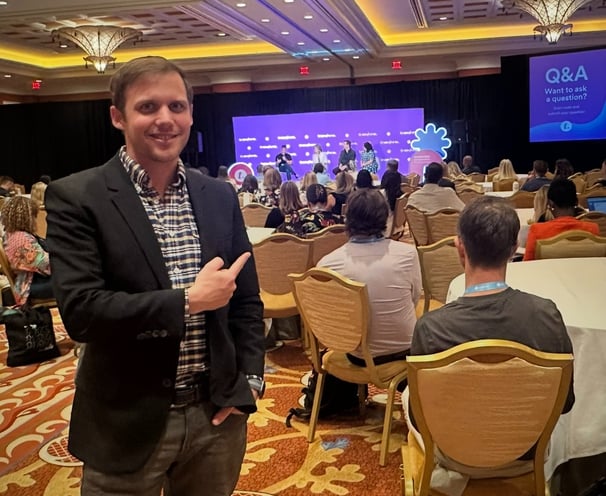

Newsletter: The Brand Brief
Discover how your thinking can become clearer, your pitch more confident, and the ways you gain buy-in faster, with a brand they understand.
Resources
When focused on market fit, gaining buy-in faster matters most.
Newsletter: Get insights in your inbox on the mindset, mantras, and methods to build a brand your market can understand and choose. No distractions—just lessons learned you can use daily to position and pitch confidently.
5
3
minutes to take action
core topics per email
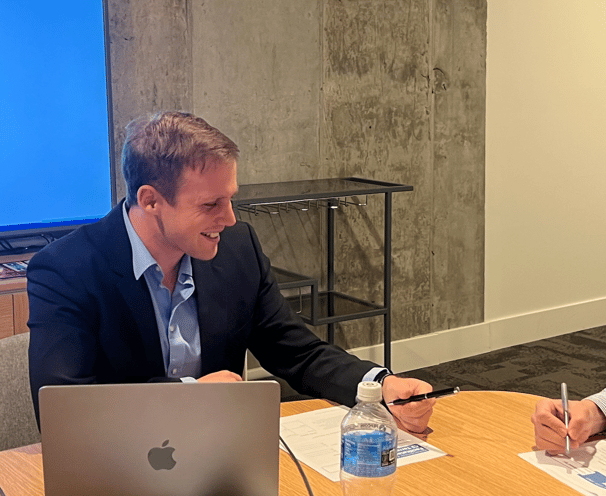

all-in-one ecosystem to brand clearly
An ever-improving suite of offers with the mission to help brands worldwide become their category’s clear choice™.
Academy
Clarity and strategy for decks, messaging, and brand leadership.
Events
Talks that spark clarity and unite teams with a message they act on.
Brand insights, usable in minutes to gain more clarity daily.
Resources
Branding that bonds.
Entering a market takes courage.
You begin unknown and work to become the preferred choice for more people. If not, your team's benchmarks underperform, affecting them emotionally (being your culture) and economically (with less resources). It lowers belief.
A growth mindset avoids that. You enter and expand in your market when believing it is possible as you focus on growing mindshare.
Be future-facing by living in the future and present. Envision your grand future output to see how it was already achieved, while working daily in the present towards its expected fulfillment.
Together we grow, as shown below.


Replace 'Step 1 to 5' and 'Phase 1 to 5' with highlight of D.C.A.R.I.'s definition, expound on 'co-compose brand flywheel to reinforce recall, renewals, and referrals. Discuss 'why' and 'what', being the Issue, Intent, Impact, and Uses for recall, renewals, and referrals.
Branding with flywheel
Growth causes growth.
Entering a market takes courage.
You begin unknown and work to become the preferred choice for more people. If not, your team's benchmarks underperform, affecting them emotionally (being your culture) and economically (with less resources). It lowers belief.
A growth mindset avoids that. You enter and expand in your market when believing it is possible as you focus on growing mindshare.
Be future-facing by living in the future and present. Envision your grand future output to see how it was already achieved, while working daily in the present towards its expected fulfillment.


Step 1: Captivate viewers.
Why: Finding the right visitors helps increase engagement and retention later on.
You made something. Great! Now, who knows about it? Your friends and family? What about beyond them? To grow your audience, a plan must be put in place to get it in front of the right people. When promoting online, that answer is content. Content educates visitors towards trusting you and believing that what you make is what they need to have. Getting their attention is a start. What comes next is converting them into leads.


Step 2: Convert viewers into leads.
Why: By providing viewers what they seek, you gain an opportunity to follow-up with them.
Converting viewers of your content doesn't mean making them customers, yet. It means getting them to give you something of value so that you can close them later. First, you must give them something of value. There are countless ways to do it. Typically, it involves landing pages and great content that would be of enough value to them in exchange for their email, phone number or something else that allows you to nurture them along their customer journey.




Step 3: Nurture leads into prospects.
Why: Nurturing leads is key for them to trust that what you offer is the right fit for their objective.
Once people give you permission to contact them after you gave something of value, you must continue to qualify them. Qualifying them means educating them about how to do something better or faster with a higher quality or cheaper offering that you provide. Working with your sales team to create a lifecycle of activities will help you build a relationship with the prospect to increase their chances of buying.
Step 4: Close prospects as users.
Why: Getting customers reflects which segment values your offering the most.
Even after promoting your offering through the content you made to nurture leads into prospects, most won't become customers immediately. This is why segmenting your audience is vital; learn from prospects' engagement, how to keep educating them, and when to put them in touch with your sales team to close them into customers. Doing this effectively will involve your sales and marketing teams working together to inspire customers to become advocates.


Spark interest at scale


Step 5: Make users your advocates.
Why: Continuing to help customers encourages them to share with their network.
Success is in the eyes of your customer. Beyond creating content, your team must have a shared and mutually beneficial outcome in mind. This will translate into your offering's content throughout your customer's journey. As this happens, you will monitor social conversations that customers are having. You will know what their real-time issues are and how to make them happier so they start sharing what you offer with their network.
Ready to build brand equity?
Phase 1: Enthusiasts
Size: ~ 2.5% of the market
Enthusiasts are the first to learn about and adopt a new offering. They are risk taking and like being on the cutting edge. Enthusiasts introduce innovations to the larger population, because they share their experiences with their friends and communities. They will be the largest initial supporters of new offerings and, because of that, tailoring your offering to their whim may be needed to gain initial momentum.


Phase 2: Visionaries
Size: ~ 13.5% of the market
Visionaries are closely tied with enthusiasts and known for their thought leadership. They look for quantum improvements. Once found, they define applications for the offering and share its use cases to their audience. While hard to satisfy, they help your offering mature through use. Their ideas and support will often refine it to the point that it is ready for the pragmatists desire for measurable and incremental improvements.




Phase 3: Pragmatists
Size: ~ 34% of the market
The larger part of the market does not adopt new innovations quickly. Pragmatists seek measured and incremental improvements, so selling to them involves intricate planning. They will observe others' experiences and will only adopt an offering once convinced it has real benefits. Once decided, they often buy from market leaders, because they know complementary tech will be made around the market leader.
Phase 4: Conservatives
Size: ~ 34% of the market
Winning-over the conservatives is vital to extending your offering's lifecycle. They are risk-adverse, but respond well to peer pressure. Innovations must be well tested and widely used before they will risk trying it. These individuals are bargain-hunters and competition will be fierce to get the sale. Their hesitance towards change influences company mergers and a growing need to develop new offerings for new markets.




Phase 5: Naysayers
Size: ~ 16% of the market
Innovation to naysayers is irritating since they are content with what they already have. They typically are not persuaded using mainstream social influence and will rely on referencing their friends and neighbors for purchase decisions. Selling to them will likely require affixing your offering to another offering they often use or having it become their only option to complete a necessary task.
Each offering matures through its 5-phase innovation lifecycle. Scaling requires a growth strategy that builds momentum through each phase. It must excite the innovators, have utility for the early adopters, be credible enough for the early majority, go through offering maturity for the late majority, and become the only option available for laggards. This will result in your offering growing into a matured company with an enduring message.
Expand across markets
“It was an honor to meet CJ at the JETRO workshop and to have the opportunity for our follow-up. I'm grateful for the insights he shared with me. Our discussions have been incredibly valuable. I'm committed to applying what I've learned and working diligently on developing my business concept. I look forward to any opportunity to learn from him in the future.”
Yuya Shimizu
JETRO (Japan External Trade Organization) participant at Stanford, Founder





